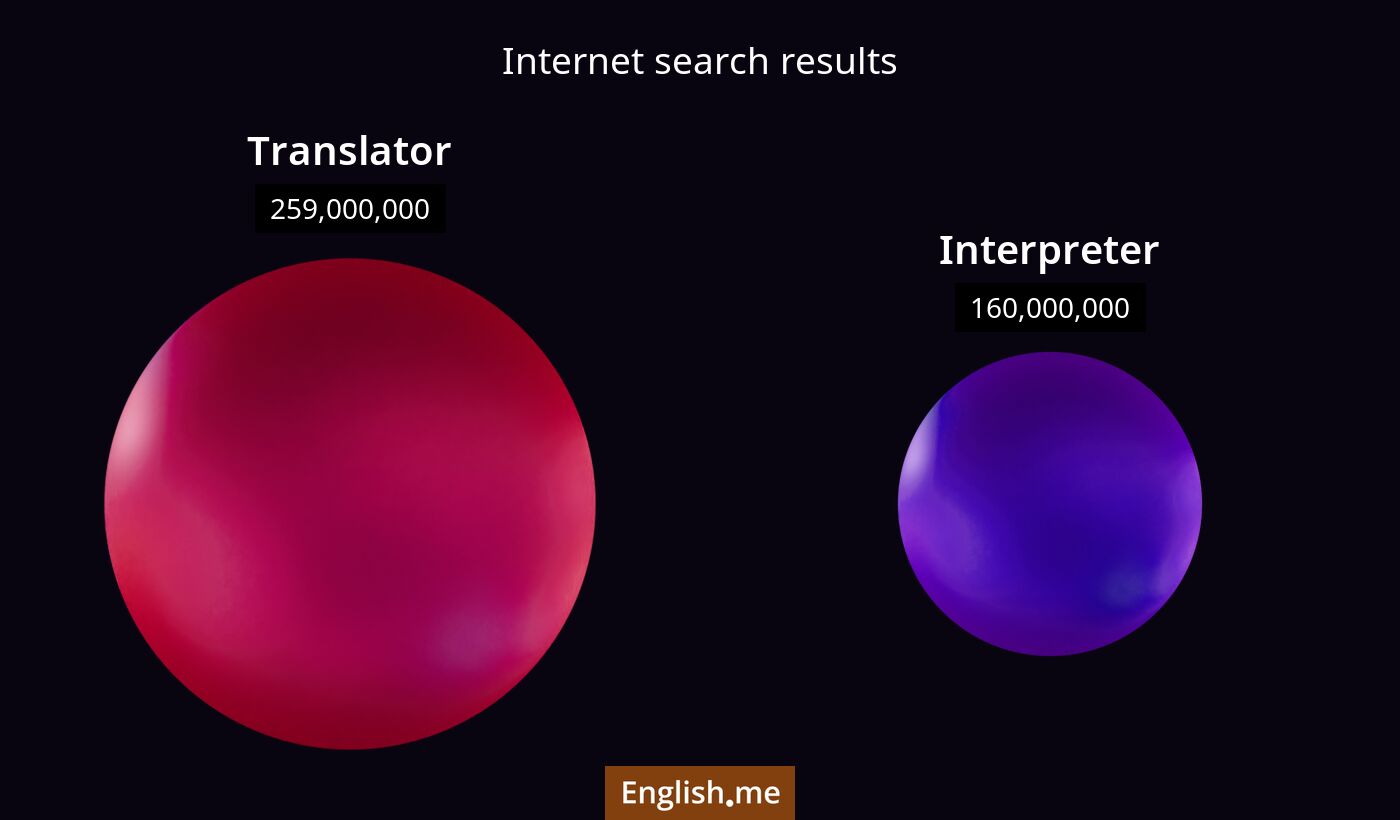"Translator" vs. "interpreter": bridging the language gap
Reviewed and edited by  Anwar Kareem 09/11/2024, 07:26
Anwar Kareem 09/11/2024, 07:26
English.me team member

 What is similar?
What is similar?
Both translators and interpreters are professionals who help facilitate communication between people who speak different languages.
 What is different?
What is different?
A "translator" typically works with written text, converting documents from one language to another, while an "interpreter" works with spoken language in real-time, facilitating verbal communication between people speaking different languages.
 Which one is more common?
Which one is more common?

 Examples of usage
Examples of usage
Translator- The translator carefully converted the novel from Japanese to English.
- As a professional translator, she specializes in legal documents.
- He used a translator app to understand the foreign instructions.
- The interpreter facilitated the conversation between the French and English delegates.
- During the conference, an interpreter assisted the non-English speakers.
- She works as a simultaneous interpreter at international events.

 English
English español
español française
française italiano
italiano deutsche
deutsche 日本語
日本語 polski
polski česky
česky svenska
svenska Türkçe
Türkçe Nederlands
Nederlands